What is the Difference Between SEO and SEM? Complete Guide for Beginners!
You know that in order to give strong answers to all of the above questions, you need to focus on SEO work. But what is the “paid results” that sometimes seem higher than you, despite a strong SEO score and your rankings high in keywords? What is SEM? And, inevitably, what is the main difference between SEO and SEM?

Today, within the framework of the responses we received from Screpy experts, we will tell you the differences between SEM and SEO and talk about which one might be more logical to use in your strategies to stand out in search engines. If you’re ready, now is the time to get started!
Try for free to boost your website traffic!
What is SEO? – The Defition of Search Engine Optimization
We now know well what SEO is: All of the optimizations we do to reach a wider target audience and to stand in front of the competitors in the relevant queries of the target audience are SEO.
SEO, in line with the requirements of these optimizations in search engines, is a step-by-step and organic – and relatively long-term – a step we take in anticipation of a rising in SERP.
SEO is mainly divided into two:
Off-page SEO
The authority and reliability of a website in the eyes of search engines is also related to where and to what extent this website is spoken in the internet world.
So Google cares about how well-known it is to make your website more visible.

Off-page SEO basically covers link building works. Link building is something that the site owner can do by sharing the link of his site through various social media platforms, as well as by increasing his recognition in the sector with guess blogging and some other strategies on other websites in his sector.
The improvement of your website’s reputation and authority allows you to improve your off-page scores as well. This is one of the areas where black hat SEO is most heavily used. But for those who are accustomed to these methods, we have bad news: Once Googlebots notices black hat SEO works much smarter than in the past, the results can be really frustrating for your site.
On-page SEO
On-page SEO covers a wide range from the keyword ratios you use on your web page to the quality of the content, from the page speed you provide to the users, to whether the design is UX compatible or not.
Although some people evaluate topics such as speed, mobile compatibility, URL optimization or site structure in on-page SEO under the heading of technical SEO, we have gathered them under a single heading since we will briefly mention them in this content.

If you wish, you can go to our Technical SEO content and take a look at the optimization suggestions that you will make on your page and that affect the crawling experience of the search engines and the navigation experience of the users by covering the technical features of the site.
What is SEM? – The Defition of Search Engine Marketing
Imagine that you buy paid packages, not organic optimizations, to move up on certain keywords in search engines. You pay a certain amount to Google and this increases your visibility.
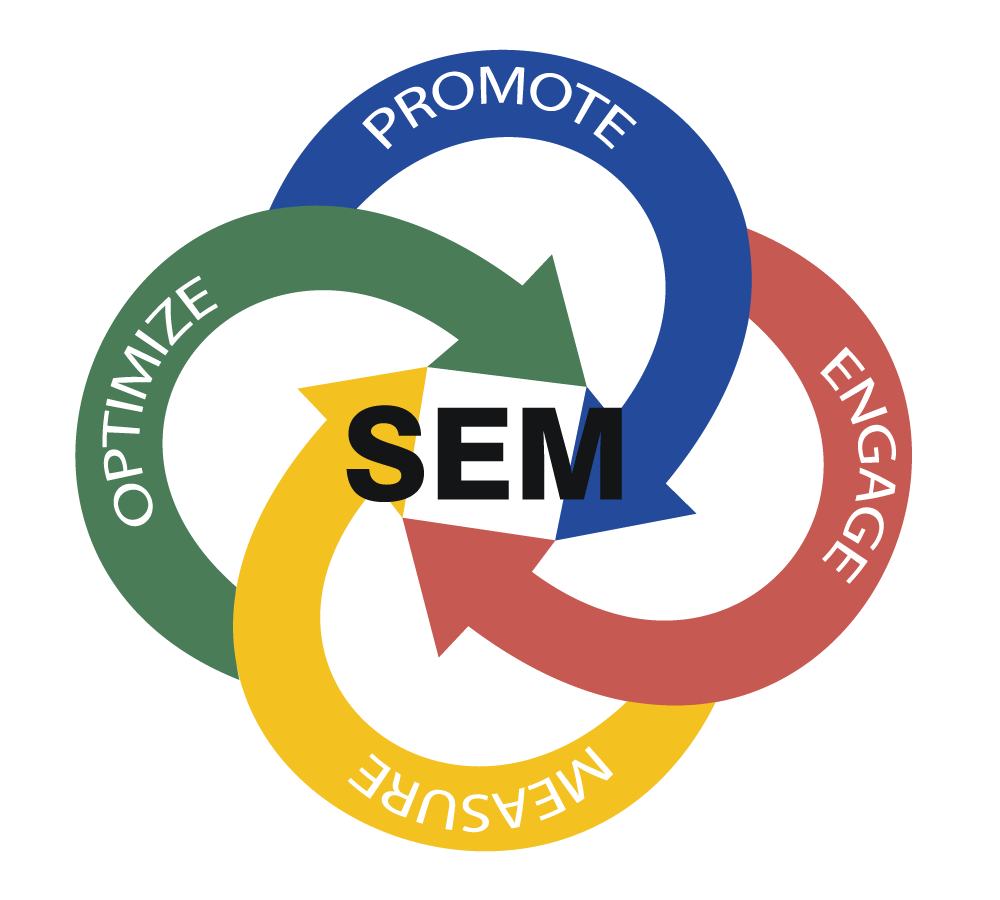
Search engine marketing means exactly that. It’s great to start appearing higher in search engines’ SERPs using paid tactics. So, what is the ranking logic or payment system of this advertising system?
PPC marketing basically defines the payment model of search engine marketing (even many other social media marketing processes).
Pay-per-click.
So, unlike traditional marketing models, you pay according to the number of people who click on your site as a result of your ad, not the time you are visible or the media area you are visible. A new generation advertising strategy that is completely conversion-oriented.
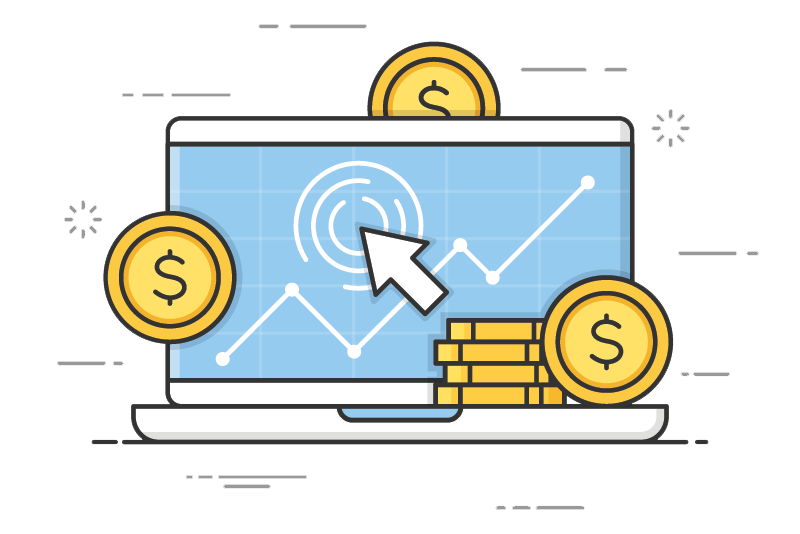
What is Google Ads and What Does It Offer to Website Owners?
Google Ads offers website owners a large number of domains to pay with pay-per-click logic. For example, ads that make you stand out on the search network, shopping ads, video ads, display ad networks or universal application ads. The types of ads that will directly affect what users see on the SERP are usually search ads.
In the Google PPC model, you need to target keywords while making your ad settings.
So what if a large number of websites with different budgets advertise for that keyword? In this case, how will the rankings be determined?
Google Ads and PPC Marketing
The PPC marketing system of Google and all other search engines are based on bidding. The fee given by the users to Google for a certain keyword, ad group, location for the advertisement is compared with the budgets of the competitors who demand the same advertisement, and the rankings of the paid results are determined accordingly.
We said you would pay per click. So, is the price you pay for every keyword or every ad per click the same?
Of course no! The concept of cost-per-click, also called CPC, basically varies from keyword to keyword, but it is directly affected by your quality score as an advertiser.
Your quality score is closely related to the clickthrough rate you received in the advertisements you gave before and the advertising content you used to be impressive conversion-focused advertising content. Google likes advertisers who also produce strong results for ad texts and offers them CPC discounts at certain rates: Because even paid results must be of a quality that is worth showing to users.
SEO or SEM? Similarities and Differences
There is a lot to tell about SEM. We will also talk about a good PPC strategy in further content. But now we want to compare SEM and SEO without losing our focus.
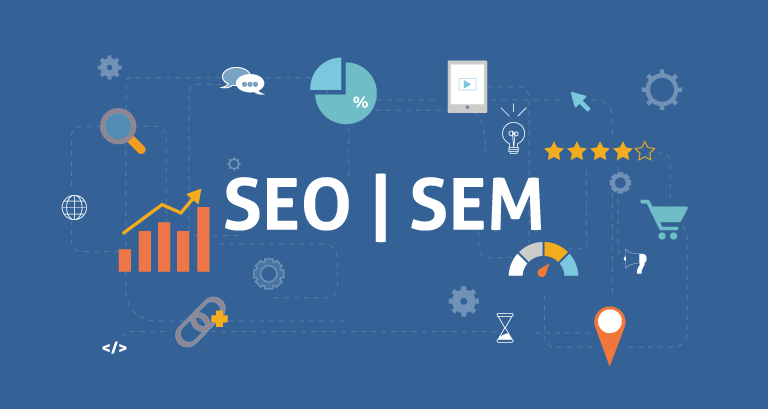
The Similarities Between SEO and SEM
Let’s take a look at the similarities between SEM and SEO:
- First of all, two different strategies are directly related to being more visible in search results in search engines. SEO does this organically. Since you are demanding an organic result, you need to wait a bit and go step by step. SEM does this as paid and gives results much faster. Both allow you to stand out before your competitors in the SERPs, increasing your brand’s visibility, traffic, and prestige.
- SEM and SEO are two different areas where you cannot create a strategy without knowing your target audience. Because both of these areas require very detailed keyword research. After determining your target audience as a large group, you need to segment them, then do research on the user intents and expectations, internet usage habits, and interests of each segment. It requires proactive optimization in two different strategies.
- SEO and SEM are two methods by which you can report your results and develop better strategies by optimizing within the framework of the results you get. By doing continuous testing, you can examine with which keywords you can make both your budget and your visibility rate stronger. Also, analyzing your competitors’ SEO and SEM strategies gives you important clues about how you can be successful in the long run.
The Differences Between SEO and SEM
SEO and SEM are two different visibility enhancement methods that are completely separated from each other in terms of general implementation, the duration of the results, and budget planning. Here is a detailed explanation of these differences:
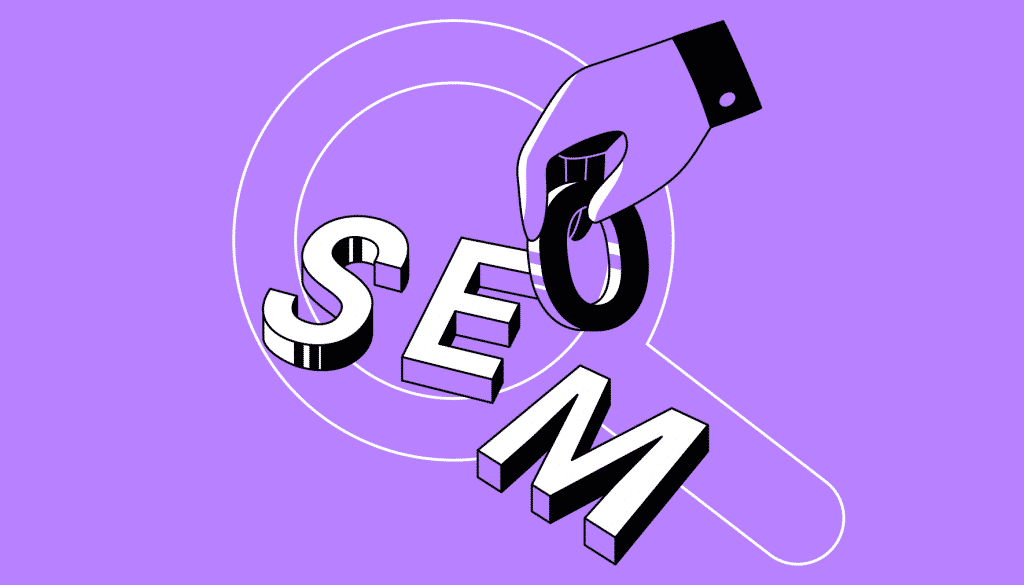
SERP Looks for SEO and SEM
In SERP, users see the results that stand out with SEO and SEM in different structures. SEO results are completely organic, so they don’t have any tags in front of them. SEM results are presented to users with the ”Ad” tag. So users can see that these results are ranked by giving money.
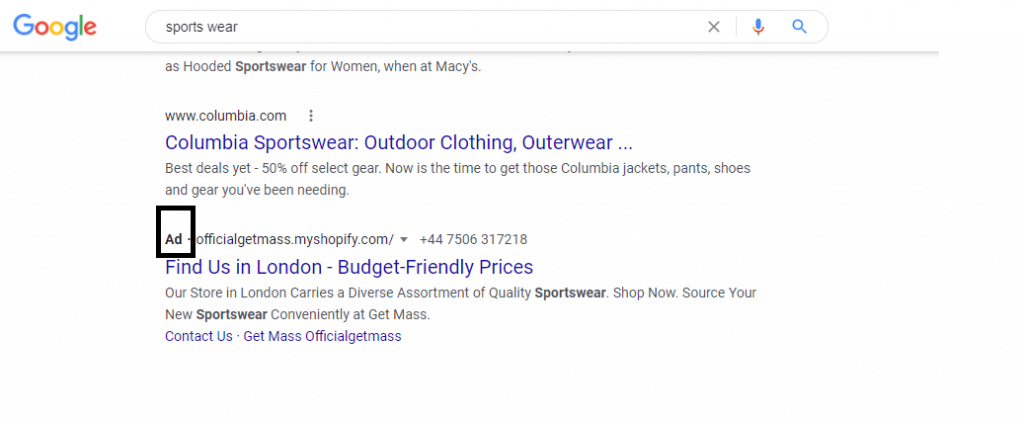
Budget Management in SEO and SEM
In SEM, if any user clicks and enters your site through your view on the SERP, you have to pay Google. However, in SEO, you do not have to pay for any user entering your site from SERP results. Conversely, if these users spend a lot of time on your site, browse between pages, and don’t bounce right away, it means Google marks you as a more “useful” website.
The fact that SEM is paid in this way means you have a steady budget to continue this strategy. This budget has to be determined by the budget your competitors have allocated for SEM, because a very low ad budget will have no effect on increasing your visibility, and a too high budget will cause you to pay more money to Google over a long period of time.

Of course, SEO will also require a certain amount of budget. For example, you may need to work with editors for content optimization and production, get services for on-page SEO work, and pay for link building to other popular website owners on the marketplace. But none of these require direct budgets as in SEM. These are about how to manage your optimization processes. Budget planning in SEO is up to you.
Auidance Targeting in SEO and SEM
The audience targeting logic between SEM and SEO is quite different from each other. SEM has a panel where you can strictly determine who will see the advertisements. On this panel, you can divide the people who will view your ad into sub-segments and appeal to a specific audience.

Audience targeting is different in SEO results. In SEO, you try to increase the rate of seeing you of a certain audience with the use of keywords and local SEO optimizations, but anyone who searches in search engines and makes a relevant search can see you.
The Results of SEO and SEM
SEM means that you show up directly in the SERP results in the keywords you specify. Therefore, you can get the effect immediately in SEM studies and you will see the result quickly. With the increase in clicks, your traffic rates increase and you have the chance to improve your conversion rates according to the performance of your site. The visibility of your ads starts with a few clicks and ends with a few clicks. It’s that simple to start or end everything.

SEO requires an organic working process. In this type of work process, it will be very important to be proactively doing certain optimizations for a long time, to follow Google updates, to keep your site updated by sharing contents for months, to improve your site technically, and of course to increase authority and recognition. It may take months to reach a certain rank in SEO strategy. Sometimes the organic traffic of your newly opened site can stay at zero points for months. But success brings long-term rewards compared to SEM.
Optimizing SEO and SEM
SEM is a strategy that you can easily understand “what is working and what is not” because it is a method that you can see the effects immediately. So it is easier to test and optimize in SEM. SEO delivers its results in the long term, and results can vary depending on a number of factors. That’s why it’s a little harder to understand what you’re doing wrong with SEO strategies.
By starting to use Screpy right away, you can discover what you are doing wrong in SEO, pagespeed, uptime. Screpy, which analyzes page-based, also provides you with tasks about how to improve your errors after sending them as warnings one by one. This makes the optimization process easier.
SEO and SEM Difference in terms of CTR
Suppose you are using both the SEO and SEM strategies and with both strategies you are on the first page of searches. In this case, which strategy will work better?

Research has found results in favor of SEO. According to these studies, the click-through-rate of SEO results is higher than SEM. In other words, users who see your content on the SERP are more likely to click on your page if you are presenting an organic result. This means that users may prefer to click on organic results rather than paid results.
However, this is a valid statistic for the first page. But what if you’re on the second page, or lower down, rather than on the first page? This is where the importance of SEM becomes clear: SEM can offer you better CTR rates in this situation.
SEO or SEM? Which is Best For Your Website Strategy?
If you’re not sure whether SEO or SEM will work better for your strategy, here are a few tips on which one might be better in which situations!
When is SEO is Better Strategy for Your Website?
Here are some recommendations:

- If you have a tight budget, you can choose SEO works instead of wasting it immediately for nothing. Of course, without a budget, SEO cannot provide a good ROI in the short term. However, for long-term results, better SEO is possible.
- You can prepare and share excellent content with keywords with very high search volumes and therefore a very high CPC rate. What does great content mean?: Incredibly good content that is more inclusive than all of your competitors. Google will see them and, over time, realize that it doesn’t get any better than this.
- If you think you have time and can expect to rise, you can expect an organic rise in your site, which you will strengthen with SEO and content marketing. Being patient will always mean longer-lasting results. Especially the projects that wait and wait for the first six months, get rewards that increase step by step.
- If you think that you are good at link building and can do off-page SEO work, we can say that this can immediately increase your authority in Google’s eyes. So you can choose SEO.
When is SEM is Better Strategy for Your Website?
Here are the best scenarios for SEM:
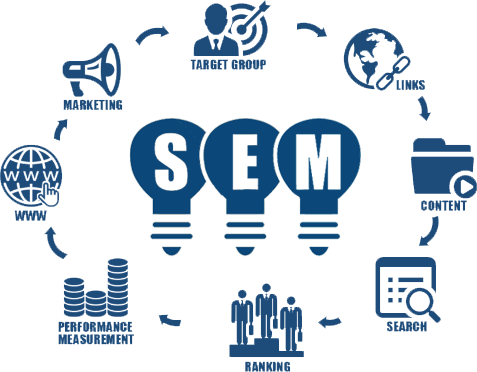
- If you think you have a strong advertisement budget that you can constantly maintain, PPC can mean a good advertising strategy for your website with its conversion-oriented structure.
- SEM and PPC is a good strategy if you have an expert in the field of Adwords Account or if you are ready to hire someone who is an expert in this field. Remember, an expert Google Ads strategy plan will mean you get great strategies by using your budget much smarter.
- If you want to make your name known in a much shorter time and increase your visibility, if you want to increase your traffic and then support it with SEO, SEM can be good for you.
FAQ
Is SEO a part of SEM?
No, SEO and SEM are completely different things, but in some cases, companies that provide SEO services also provide SEM services through Google Ads and similar platforms. SEO means optimizing your website according to the demands of search engines. SEM, on the other hand, means advertising on certain platforms by using the ad models of search engines.
Is SEO better than Google ads?
Both marketing methods have various advantages and disadvantages. It is necessary to wait a little long for tracking analytics, results, and ROI in SEO. Google Ads gives all this much faster. Besides, the effects of SEO are longer-term and more permanent. The effects of Google Ads will end when you stop paying.
What is the principle of SEM?
Basically, SEM is a marketing process that works with the pay-per-click system. In other words, the number of impressions or the time it is shown for the ad you give on the search engine is not important in terms of the money you will pay. The amount of money you will pay determines how many people click on this ad. What’s more, SEM allows you to show your ad exactly to your potential customers with specific audience targeting methods.
How do I start an SEM campaign?
The first thing you need to do is analyze your target audience and determine which keywords the services on your site are being searched for. Because the marketing strategy will be built on these words.
What is pay-per-click?
Pay per click is a form of marketing supported by search engines such as Google, Yandex and advertising models of social media platforms. In this form of marketing, you pay an ad serving fee based on the number of people who click your ad.
How much do pay per click ads pay?
As an average company, if you’re doing SEM work on Google, you have to agree to pay between one and two dollars per click. The amount that a medium-sized business has to pay for the SEM process created with a competitive keyword strategy can range from $ 9000 to $ 10000 per month.
How SEM can help your business?
SEM can be a good method if you want to stand out without waiting for the results of SEO work and maximize your income by increasing your traffic.
How much does a Google ad cost?
You might need to pay a dollar or two per click for an average Google name. If you want to advertise on keywords with a very high competition rate, this fee can go up to $ 50 per click. These numbers apply not only to Google but also to Bing.
Can we run Google ads without Website?
No, Google’s online ads work with the logic of linking to your site. Therefore, you cannot do SEO work, as well as SEM work, without a website for your company.
Where are Google ads placed?
Google Ads, which you receive a fee for, may be displayed in any area within the Google Display Network. For example, Google ads can be displayed on mobile sites, mobile applications or on all platforms belonging to Google such as Finance, Youtube, Gmail, Blogger.
Are Google ads worth it?
Yes, most of the time. Because especially small-business websites do not have a sufficient SEO score to appear at the top under normal conditions can increase their recognition through advertising and reach new users.
Test Your Website Issues
You can quickly analyze your site
